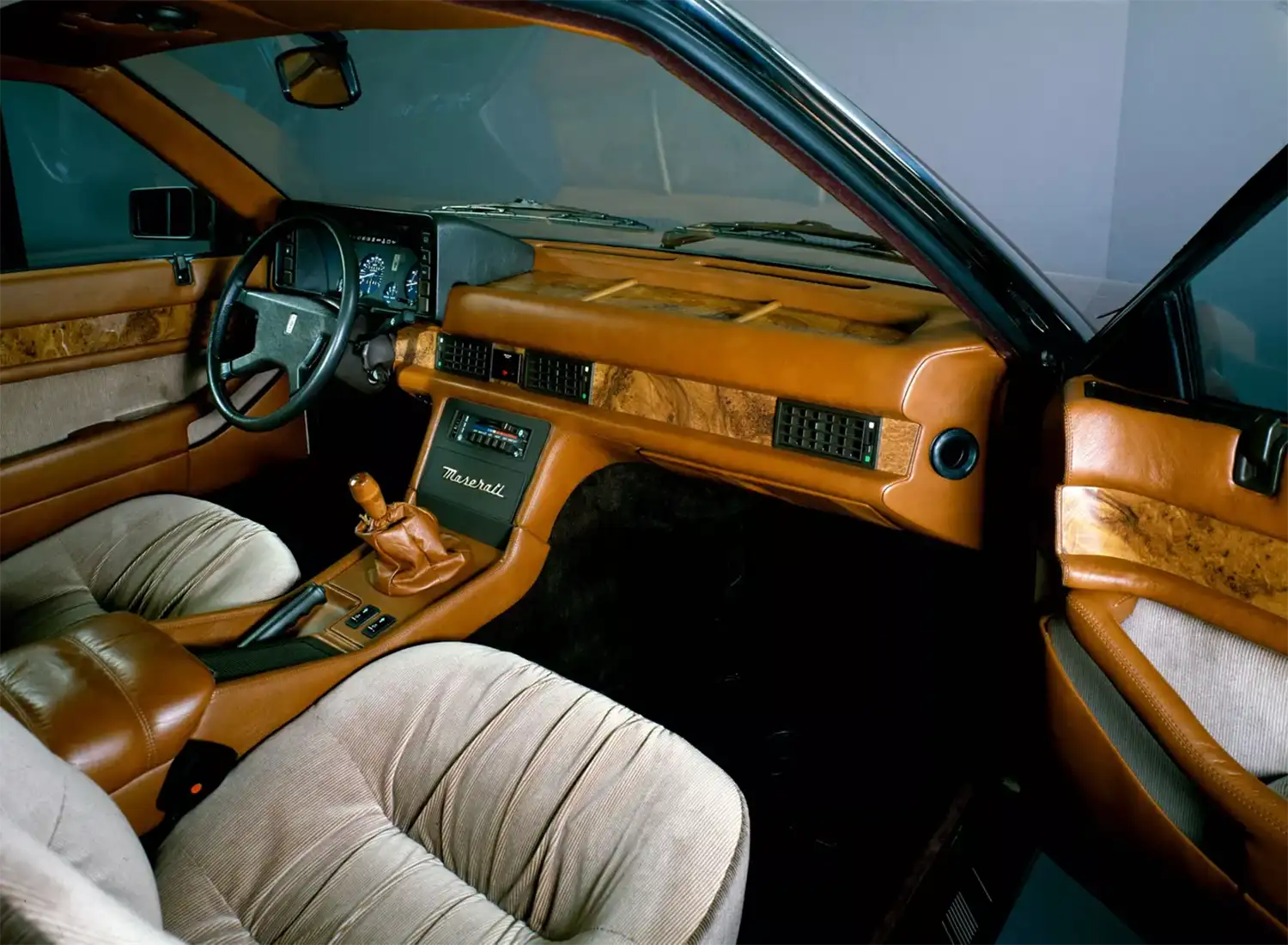
In December 1981, Maserati embarked on a bold new chapter with the introduction of the Biturbo, a model that would redefine the brand’s identity and reach. Under the visionary leadership of company owner Alejandro De Tomaso, the Biturbo was conceived as a sporty coupe that combined top-tier performance with a competitive price point—a strategy aimed at broadening Maserati’s appeal to a wider audience.
The Groundbreaking Biturbo Engine
At the heart of the Biturbo was its innovative engine, a compact 90-degree V6 that set a world first by featuring two small turbochargers in a production car. This engineering marvel delivered a blend of power and efficiency that was previously unheard of, contributing significantly to the Biturbo’s success. The car’s remarkable performance, coupled with a luxurious interior, made it a favorite among enthusiasts, though the factory initially struggled to meet demand for the first-generation models.

In 1983, Maserati introduced the Biturbo S, a more potent version equipped with twin intercoolers. This model was easily recognizable by its two NACA air ducts on the hood, a subtle yet significant enhancement that further boosted performance. The evolution continued in 1986 and 1987 with the introduction of fuel injection, leading to the creation of the Biturbo i and Biturbo Si models, each offering improved efficiency and power.

Maserati Biturbo Series Specifications
Maserati Biturbo (1982-1985)
- Displacement: 1,996 cc
- Top Speed: 215 KM/H
- Model Code: Tipo AM331
- Body Type: 2-door, 5-seater three-box coupé
- Design: Pierangelo Andreani
- Number Produced: 11,919 (all variants)
- Chassis: Monocoque steel construction
- Dry Weight: 1,086 kg
- Engine Configuration: 90° V6, three valves per cylinder (two intake, one exhaust), single overhead camshaft, twin-turbo
- Maximum Power: 180 hp @ 6,000 rpm
Maserati Biturbo S (1983-1994)
- Displacement: 1,996 cc
- Top Speed: 221 KM/H
- Model Code: Tipo AM331
- Body Type: 2-door, 5-seater three-box coupé
- Design: Pierangelo Andreani
- Number Produced: 11,919 (all variants)
- Chassis: Monocoque steel construction
- Dry Weight: 1,086 kg
- Engine Configuration: 90° V6, three valves per cylinder (two intake, one exhaust), single overhead camshaft, twin-turbo
- Maximum Power: 205 hp @ 6,500 rpm
Maserati Biturbo i (1986-1990)
- Displacement: 1,996 cc
- Top Speed: 220 KM/H
- Model Code: Tipo AM331
- Body Type: 2-door, 5-seater three-box coupé
- Design: Pierangelo Andreani
- Number Produced: 11,919 (all variants)
- Chassis: Monocoque steel construction
- Dry Weight: 1,086 kg
- Engine Configuration: 90° V6, three valves per cylinder (two intake, one exhaust), single overhead camshaft, twin-turbo
- Maximum Power: 187 hp @ 6,000 rpm
Maserati Biturbo Si (1986-1988)
- Displacement: 1,996 cc
- Top Speed: 228 KM/H
- Model Code: Tipo AM331
- Body Type: 2-door, 5-seater three-box coupé
- Design: Pierangelo Andreani
- Number Produced: 11,919 (all variants)
- Chassis: Monocoque steel construction
- Dry Weight: 1,086 kg
- Engine Configuration: 90° V6, three valves per cylinder (two intake, one exhaust), single overhead camshaft, twin-turbo
- Maximum Power: 220 hp @ 6,350 rpm

The Maserati Biturbo series stands as a testament to innovation and daring in automotive design. By introducing the world’s first production car with twin-turbocharging, Maserati not only enhanced its own legacy but also influenced the direction of future high-performance vehicles.
Source: Maserati
This Article use tools from Chatgpt



